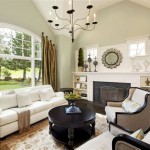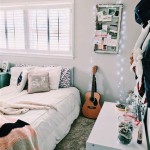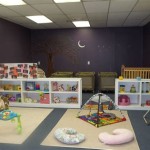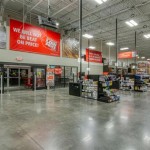Decorating A Long Narrow Living Room
Decorating a long, narrow living room presents unique challenges and opportunities. The elongated layout can feel cramped or disproportionate if not addressed with careful planning and design choices. However, with strategic furniture placement, clever use of color and lighting, and a focus on maximizing space efficiency, it is possible to transform a long, narrow living room into a stylish and functional space.
The key to successfully decorating this type of room lies in understanding its limitations and exploiting its potential. This involves acknowledging the inherent challenge of its shape while embracing design strategies that create visual balance, enhance flow, and ultimately, make the room feel more spacious and inviting.
Before embarking on any decorating project, it is crucial to accurately measure the room's dimensions. Note the length, width, and height, as well as the location of windows, doors, and any architectural features. This information will serve as the foundation for space planning and furniture selection. Understanding the room's scale is paramount to avoiding common mistakes such as overcrowding or choosing furniture that is disproportionately sized.
Dividing the Space into Zones
One of the most effective strategies for decorating a long, narrow living room is to divide it into distinct zones. This breaks up the monotony of the elongated shape and creates dedicated areas for different activities. Zoning helps to visually shorten the room and makes it feel more functional and organized.
Consider dividing the room into three or more sections based on intended use. For example, one zone could be a seating area with a sofa, armchairs, and a coffee table, perfect for conversation and relaxation. Another zone could be a media area with a television and entertainment console, ideal for watching movies or playing games. A third zone could be a reading nook with a comfortable chair and a bookshelf, providing a quiet space for reading or relaxing.
Visual separation between zones can be achieved through several techniques. Area rugs are a particularly effective method, as they define each zone while adding warmth and texture to the space. Placing a rug under the seating area, for instance, clearly delineates it from the adjacent media zone. Different rug patterns and colors can further emphasize the distinction between zones.
Furniture placement also plays a crucial role in zoning. A strategically placed sofa with its back facing towards the entryway can act as a visual barrier, separating the seating area from the entrance zone. Similarly, a bookcase can be used to create a partition between the reading nook and the rest of the living room. The arrangement of furniture should encourage flow and movement between zones without obstructing pathways.
Color is another powerful tool for defining zones. Using different paint colors or wallpaper in each zone can create visual interest and further emphasize the separation. For example, the seating area could be painted in a warm, inviting hue, while the media area could be painted in a cooler, more calming color. However, it is important to maintain a cohesive color palette throughout the entire room to avoid a disjointed look.
Lighting can also be used to highlight different zones. Consider using a combination of ambient, task, and accent lighting to create the desired atmosphere in each area. For example, the seating area might benefit from soft, ambient lighting and a task lamp for reading, while the media area might require dimmer lighting to reduce glare on the television screen. Strategically placed accent lighting can draw attention to specific features or artwork within each zone.
Optimizing Furniture Placement and Selection
Choosing the right furniture and arranging it strategically is crucial for maximizing space and functionality in a long, narrow living room. Opting for furniture pieces that are appropriately scaled to the room's dimensions is essential to prevent overcrowding and maintain a sense of openness. Avoiding bulky or oversized furniture is generally advisable.
In a long, narrow space, it is generally recommended to avoid placing all the furniture against the walls. This can accentuate the room's narrowness and create a tunnel-like effect. Instead, consider floating some furniture pieces away from the walls to create a more dynamic and inviting layout.
A sectional sofa can be a good option for a long, narrow living room, as it provides ample seating without taking up too much floor space. However, it is important to choose a sectional that is appropriately sized for the room. A smaller sectional or a love seat might be a better option than a large, sprawling sectional.
When arranging furniture, consider using a focal point to anchor the space. This could be a fireplace, a large window, or a piece of artwork. Arrange the furniture around the focal point to create a sense of balance and harmony. Ensure that the furniture placement allows for easy conversation and interaction.
Multi-functional furniture can be a valuable asset in a small space. Consider using a coffee table with built-in storage, an ottoman that can be used as a footrest or extra seating, or a sofa bed that can accommodate overnight guests. These types of furniture pieces help to maximize space utilization and add versatility to the living room.
Mirrors can be strategically placed to create the illusion of more space. A large mirror placed on a long wall can visually widen the room and reflect light, making it feel brighter and more open. Consider placing mirrors opposite windows to maximize the amount of natural light in the room.
Vertical storage solutions are also a smart choice for a long, narrow living room. Tall bookshelves or shelving units can provide ample storage space without taking up too much floor space. Consider using vertical storage to display books, decorative objects, or even plants. Vertical storage can also add visual interest to the room and draw the eye upwards, creating a sense of height.
Using Color and Lighting to Enhance Space
Color and lighting are powerful tools that can significantly impact the perceived size and atmosphere of a long, narrow living room. Careful consideration should be given to the selection of colors and the arrangement of lighting fixtures to create a space that feels both spacious and inviting.
In general, lighter colors tend to make a room feel larger and more open, while darker colors can make a room feel smaller and more intimate. For a long, narrow living room, it is generally recommended to use lighter colors on the walls to maximize the feeling of spaciousness. Pale blues, greens, grays, and off-whites are all good options.
However, that does not mean that darker colors should be completely avoided. Darker colors can be used as accents to add depth and visual interest to the room. Consider painting one of the shorter walls in a darker color to visually shorten the room and create a focal point. Darker colors can also be used in accessories, such as pillows, rugs, and artwork.
Strategic use of color blocking can also be effective. Color blocking involves using contrasting colors in distinct areas to create visual interest and define zones. For example, one wall could be painted in a lighter color, while the adjacent wall could be painted in a darker color. This can help to break up the monotony of the long, narrow space and create a more dynamic look.
Lighting is another crucial element in creating a sense of spaciousness and ambiance. A combination of natural and artificial lighting is ideal. Maximize the amount of natural light by keeping windows uncovered or using sheer curtains. If necessary, consider adding skylights or larger windows to increase the amount of natural light in the room.
Artificial lighting should be layered to provide sufficient illumination and create the desired atmosphere. Ambient lighting, such as overhead fixtures or recessed lighting, provides general illumination for the entire room. Task lighting, such as table lamps or floor lamps, provides focused light for specific activities, such as reading or working. Accent lighting, such as spotlights or picture lights, highlights specific features or artwork in the room.
Avoid using a single overhead light fixture in the center of the room. This can create harsh shadows and make the room feel smaller and less inviting. Instead, opt for a combination of lighting fixtures placed at different heights and in different locations throughout the room. Dimmers can be used to adjust the intensity of the lighting and create the desired mood.
Consider using mirrors to reflect light and make the room feel brighter and more open. Place mirrors strategically to capture and distribute natural light throughout the space.
By carefully selecting colors and arranging lighting fixtures, it is possible to significantly enhance the perceived size and atmosphere of a long, narrow living room, creating a space that feels both spacious and inviting.

How To Arrange Furniture In A Long Narrow Living Room Solutions For Tricky Spaces
:max_bytes(150000):strip_icc()/decorate-long-narrow-living-room-2213445-04-96b1f74b88d343cba835f6e13fbd50df.jpg?strip=all)
Ideas For Decorating A Long And Narrow Living Room

Un Awkward The Living Space Smart Ways To Decorate A Long And Narrow Room Hipcouch Complete Interiors Furniture

How To Decorate A Long Narrow Living Room

17 Narrow Living Room Ideas To Get Inspired Interior God Long Small Decor

Un Awkward The Living Space Smart Ways To Decorate A Long And Narrow Room Hipcouch Complete Interiors Furniture

How To Decorate A Long Narrow Living Room So Much Better With Age

How To Arrange Furniture In A Long Narrow Living Room Solutions For Tricky Spaces

How To Furnish And Love A Long Narrow Living Room In 5 Easy Steps Lisa Goulet Design Furniture Layout

How To Decorate A Long Narrow Living Room Furniturebox
See Also








